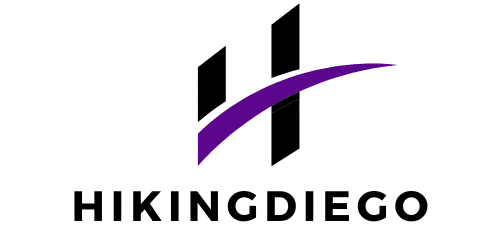The United Kingdom’s exit from the European Union (Brexit) has brought about paradigm shifts in international trading paradigms, especially for Small and Medium Enterprises (SMEs). For these enterprises, the landscape of trade has changed significantly. Given the added complexities of navigating cross-border trade, it is paramount to streamline the export documentation process. This will enhance the efficiency and effectiveness of businesses within the context of the new trade model. The article explores ways to streamline the export documentation process, focusing on goods, border regulations, customs compliance, and the role of data and security in the international business landscape.
Understanding The New Trade Model
The new trade model post-Brexit is characterised by changes in regulations and the need to comply with both UK and EU customs and biosecurity controls. A clear understanding of these changes is vital for your businesses to maintain a competitive edge in the international trade milieu.
Avez-vous vu cela : How to Leverage AI for Personalized Nutrition Recommendations in the UK?
Understanding the new trade model is about recognising that trading is no longer as simple as it used to be. The model has shifted from a relatively free system to a controlled one where every product being exported has to meet specific standards. Compliance with these standards requires clear documentation to validate the product’s quality and adherence to the norms.
The UK government has established new agreements with the EU post-Brexit to govern this trade. These agreements necessitate a new level of regulatory compliance, involving detailed documentation. The key is to understand these requirements and streamline the process of preparing and managing these documents.
Lire également : How to Use Big Data to Optimize Inventory Management for UK Retailers?
Meeting Border and Customs Regulations
Border and customs regulations are some of the most critical aspects of international trading. For UK-based SMEs, these have become more stringent post-Brexit. Meeting these standards doesn’t just involve compliance on paper but also involves physical inspections at the borders.
To streamline the process, businesses must have a comprehensive understanding of the customs requirements for their specific goods. Each category of goods has its own set of regulations, which can range from biosecurity standards to quality controls. By understanding these requirements, companies can ensure that their goods meet the necessary standards before shipping, reducing the time spent at the border.
Providing complete and accurate data on all export documents, including the Customs Declaration Form, is crucial. This information includes details about the product, its origin, and its destination. Providing incorrect or incomplete data can lead to delays at the border, increasing the time and cost involved in the export process.
Ensuring Compliance with Trade Agreements
Trade agreements form the backbone of international trading. They define the terms and conditions under which businesses can trade goods across borders. In the post-Brexit era, UK SMEs need to navigate a new array of trade agreements, which can be a daunting task.
To streamline the process, it’s crucial to understand the details of these agreements thoroughly. This understanding will help you ensure that your business practices and products are in compliance with the terms and conditions outlined in the agreements.
Additionally, maintaining a record of all compliance activities can help to expedite the process of crossing borders and dealing with customs. This record can serve as an evidence base in case of any disputes or queries from the border control authorities.
Leveraging Digital Solutions for Documentation
In the modern business world, digital solutions offer a range of benefits for managing and streamlining export documentation. From data management to security, these solutions can significantly reduce the time and effort involved in managing the documentation process.
Digital solutions can automate many of the manual processes involved in preparing export documents. This includes filling in forms, collecting necessary data, and even submitting the documents to the relevant authorities. By automating these processes, businesses can save significant amounts of time and reduce the risk of errors.
Additionally, digital solutions offer enhanced security for your valuable business data. They can protect sensitive information from being lost or stolen, ensuring that your business’s trade secrets and customer data remain secure.
Embracing a Data-Driven Approach
In the age of big data, businesses can leverage data analysis to streamline their export documentation process. By analysing your business’s export data, you can identify patterns and trends that can help you improve your documentation processes and procedures.
Data analysis can, for instance, help you identify which products tend to face more challenges at the border, enabling you to pre-emptively address any potential issues. It can also help you identify any weaknesses in your documentation process, such as frequent errors or missed deadlines, and take action to address these issues.
Embracing a data-driven approach can therefore play a crucial role in streamlining your export documentation process, helping your business operate more efficiently in the post-Brexit trade landscape.
Incorporating the Target Operating Model in International Trade
The target operating model (TOM) is an essential element in international trade, particularly for UK-based SMEs dealing with the post-Brexit changes. It is vital for businesses to adapt to the TOM, as it provides a clear framework for conducting trade activities efficiently and effectively.
The TOM involves a detailed analysis of how your business operates in the current international trading landscape. It encompasses various aspects of your business, including your supply chains, safety and security measures, risk-based assessments, and the use of a single trade window for exporting goods.
Setting a border target is a significant component of the TOM. This involves setting a clear target for the time and cost of getting goods across the border, which is particularly crucial in the context of the new controls applied by both the UK and the EU. By setting a clear border target, you can measure your success and identify any areas for improvement.
Comprehending the TOM may seem daunting, but it’s crucial to remember that it does not require a complete overhaul of your business. Rather, it involves making strategic changes to your existing processes to meet the new demands of international trade post-Brexit. This includes ensuring compliance with new trade agreements, meeting biosecurity controls, and adapting to new safety and security declarations.
Ensuring Safety and Security in your Supply Chains
Safety and security have always been integral to the process of international trade. However, post-Brexit, these have taken on a more pronounced role. UK-based SMEs need to ensure that their supply chains are not only efficient but also meet the stringent safety and security requirements of both the UK and the EU.
By incorporating safety and security measures into your supply chains, you safeguard not just your goods, but also your business reputation. This includes ensuring that your products meet the stringent food safety and public health standards set by the UK and the EU. Lack of compliance could pose a risk to your business, leading to significant penalties and damaging your business reputation.
Similarly, ensuring the security of your supply chains is paramount. This includes security measures to prevent theft or tampering during transit and security declarations that certify the authenticity of your goods. As a trusted trader, the onus is on you to ensure that your supply chains are secure from start to end.
While managing safety and security can be complex, digital solutions can provide valuable assistance. They can help in automating the process of gathering and analysing data, ensuring accurate and timely security declarations. Moreover, digital solutions can help in monitoring the supply chain in real-time, enabling you to address any issues promptly.
Conclusion
Navigating the changes in the international trade landscape post-Brexit is a formidable task for UK-based SMEs. However, by understanding the new trade policies, incorporating the target operating model, meeting border and customs regulations, ensuring compliance with trade agreements, leveraging digital solutions for documentation, and embracing a data-driven approach, businesses can streamline their export documentation process effectively.
Adapting to these changes not only requires strategic planning but also a willingness to embrace new technologies to manage the complexities of international trade. The journey may be challenging, but by understanding the changes and making necessary adjustments, UK-based SMEs can remain competitive in the new era of global trade. It’s an opportunity to redefine, innovate, and adapt – a chance to turn the challenge of Brexit into an opportunity for growth and prosperity.






